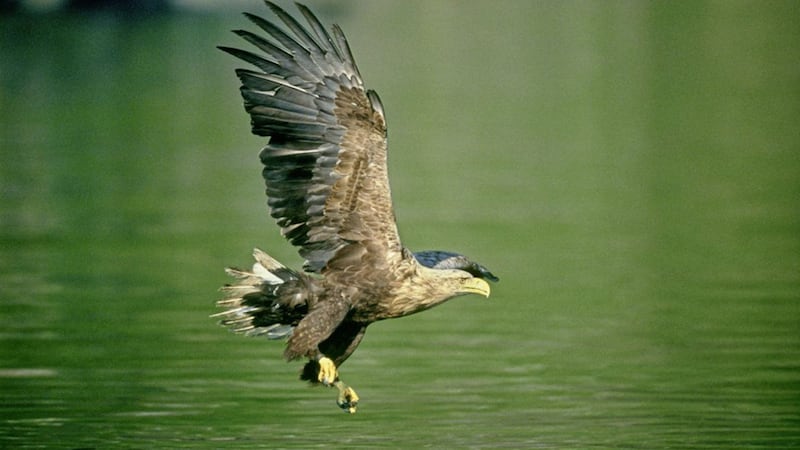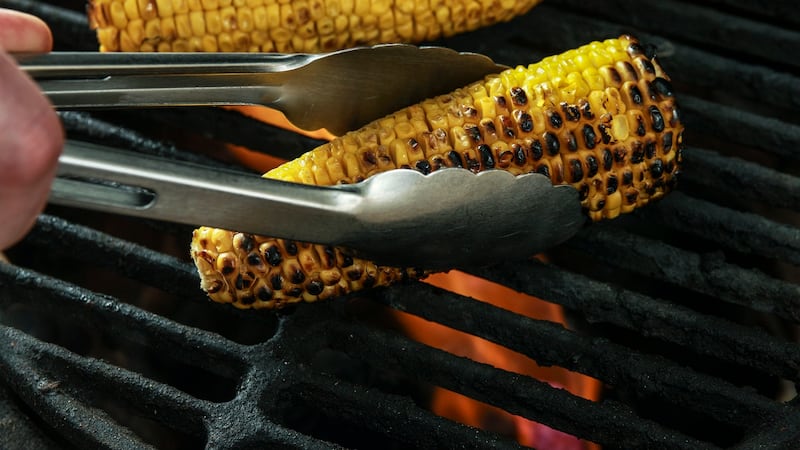A SPARROWHAWK divebombs from above and collides with the pigeon that a few seconds earlier had been flying nonchalantly over a small Co Down lough. However, despite wobbling in mid-air, the pigeon recovers its balance and manages to make it to cover in among the branches of a pine forest along the shores of the lough.
The sparrowhawk gives up the chase and soars up into the air again and out of sight as it searches for its next target. It is a dramatic moment and something that happens every day in our skies, but it is rare to witness it at such close quarters.
The recovery of raptors throughout Ireland in the past two decades has been one of our biggest success stories, as many of them had become extinct or numbers falling to just a handful. Buzzards are now a common sight when not that long ago there were only a few pairs in the entire island breeding on the north Antrim coast.
Red kites have been reintroduced in a successful programme in Co Down that has now seen second and third generations of the these birds starting to come through as they spread across into other counties.
But one of the most exciting schemes is taking part in the south west where white-tailed eagles are once again soaring over the skies of Munster. Last week, a group of young eagles were brought from Norway to Co Kerry to be released at three sites – Lough Derg, Shannon estuary and Killarney National Park.
In all, 10 young eagles will be released next month as part of an ongoing scheme to re-introduce the species back into Ireland. Previously, 100 young white-tailed eagles were released in Killarney National Park between 2007 and 2011.
Birds from these releases subsequently dispersed widely throughout Ireland with first breeding in 2012 on Lough Derg, Co Clare. Since then, a small breeding population of eight to 10 pairs has successfully fledged 26 chicks with an additional six chicks likely to fledge into the wild in Munster over the next few weeks.
Some chicks which were born in Ireland are now reaching maturity and starting to breed in the wild. However, a scientific review of the reintroduction project indicated the small population is still vulnerable to mortality factors such as illegal poisoning and the breeding population was negatively impacted by avian flu in 2018 and Storm Hannah last year.
For this reason, it was decided to carry out this supplementary release to bolster the existing population. The young eagles were collected under licence in June 2020 by the Norwegian Institute for Nature Research (NINA) and flown to Co Kerry. They will be tagged before release to allow the project to monitor their progress and their integration into the existing Irish breeding population.
The Irish White-tailed Sea Eagle Reintroduction Programme is managed by the Republic's National Parks and Wildlife Service (NPWS) in collaboration with others, including in particular the Golden Eagle Trust.
The NPWS says that as well as bringing biodiversity and ecosystem benefits, restoring eagles to the wild can deliver potential economic benefits. Indeed, the positive economic benefit of ecotourism was experienced in Mountshannon, Co Clare, when the first breeding pair nested within sight of the village in 2012, attracting thousands of visitors over the next few years.
Live streaming of a white-tailed eagle nest in Glengarriff, Co Cork, has proven to be a huge virtual nature attraction, even making the recent BBC list of top 20 virtual nature attractions in the world.
The NPWS says the release programme and further reintroduction is a critical project in terms of Ireland's biodiversity – reintroducing an iconic wild species that was exterminated by man – and will contribute significantly to the economy, tourism, communities and to human wellbeing.








